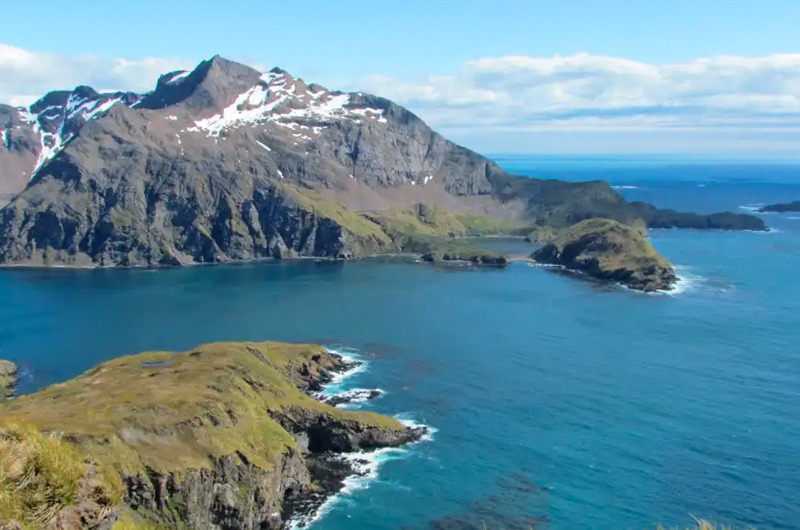The Galapagos of the Poles, South Georgia is a far-flung, remote island that is located between Argentina and Antarctica. The Island is located in the Atlantic Ocean, 1,000 km east of the Falkland Islands, and it technically falls under the territorial control of The British Overseas Territory, but is also professed as its part by Argentina. It is the largest part of the South Georgia Archipelago and the South Sandwich Islands.
The island is so dim and distant that the only means to reach this near Arctic-oasis is a boat journey of two days and nights from the Falkland Islands or Tierra del Fuego. The seas that one must cross to get to South Georgia islands are some of the most belligerent in the world. But this has only worked in the favour of the islands untampered by mankind.
The inaccessible location of these islands has made it one of the world’s richest biodiversity hotspots. It is so distant that most of the people in the UK are unaware even of its existence despite it being an official territory under the British administration.
The Tundra type vegetation and mighty glacial peaks, with nearly three-fourths of the island totally covered with ice, make the perfect haven for beautiful penguin species. Maximum numbers of king penguins are found on these islands. At St Andrew’s Bay, around 15,000 king penguins come to breed every year.
The island hosts around 1500 species of various animals and a wide variety of fish. The warm waters of the Atlantic Ocean mix with the colder waters of the Southern Ocean, making it a suitable breeding ground for Antarctic krill, blue whales and seals. A 2011 British Antarctic Survey concluded that this island boasts of a more robust biodiversity than the Galapagos island.
South Georgia island is one of the least visited places by tourists in the world (only 10,000 visitors recorded last year). The reason is the lack of any airports and the extreme weather conditions on the island itself. Only around thirty odd people make up for the permanent residents on these islands.
In the 19th and the 2th centuries, sailors did trade in whales and slaughtered the seals for their oil. But today only the ruins of the ginormous oil and whale industries remain here amidst the teeming fauna and distinct flora. Today healthy elephant seals soak up the winter sun and nearly two million Antarctic fur seals and 400,000 southern elephant seals reside on these islands.
The island is also home to about seven million penguins and half the world’s population of albatrosses (about 250,000), coming to breed annually on these islands. The island also hosts around 55 endangered blue whales and 25,00 humpback whales. Th elysium bliss that he animals living here experience is yet untainted by any human interaction and that is proving to be a boon for this nature’s gift.









